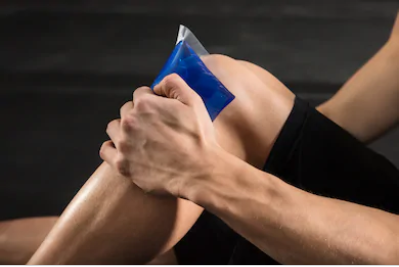When you’ve just sprained your ankle or pulled a muscle, all you want is some pain relief, but should you use heat or ice?
To sort out this confusion, what is best and what should you really do?
How To Use Ice
Ice is useful when you want to reduce swelling – remember that ankle sprain? This is because blood and fluid collects rapidly, making it both painful and stiff.
At this point, an ice pack helps decrease swelling and reduce pain by slowing the blood flow and numbing the nerves. As a result, your ankle will be less swollen and painful.
Ice packs are very useful in bruises, strains and joint swelling. Use them for any acute swelling, over the first 1-5 days. Remember to wrap the ice pack in a damp towel so it doesn’t damage the skin.

How To Use Heat
Heat packs, hot water bottles or electric heating pads can be very useful if you have muscle tightness or a chronic injury. Heat improves the circulation, relaxing the muscles and delivers nutrients to help speed up healing.
When you use a heat pack, wrap it in a towel and check the temperature so it doesn’t burn the skin.


When Not To Use Heat
Don’t use heat if you have a painful, red or swollen joint. This increases circulation so that fluid collects, worsening the swelling and surrounding healthy tissue. This could aggravate the pain. You’d be better off icing the injured area.
When To Use Neither Heat Nor Ice
Whether you use hot or cold packs, be aware that you can damage your skin and deeper tissues. Ensuring you wrap the heat pack or ice with towels can help prevent or avoid damage to the skin.
Do not use heat or ice
- If you have an open or infected wound
- If the circulation or sensation level is poor, and you cannot feel temperature changes
Ice and heat provide inexpensive, non-toxic pain relief. Contact us for more help with your injury and we will help speed up your recovery and get you moving more easily.
Need More Information?
For more information and a full list of services offered at Allied Physiotherapy Health Group, please visit our website here.
